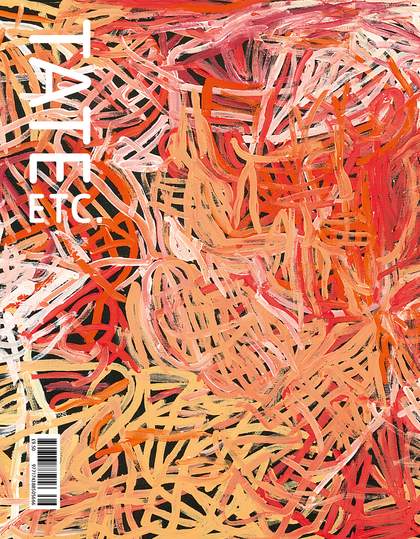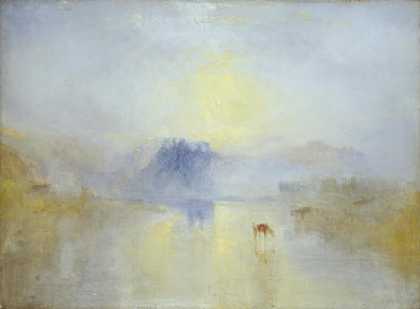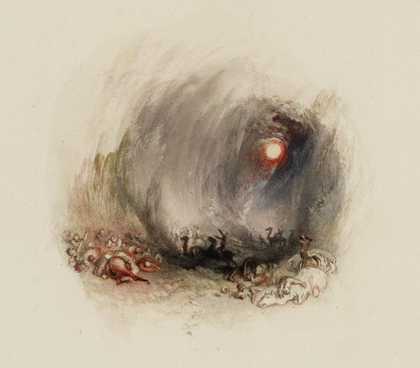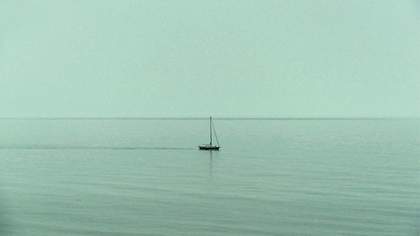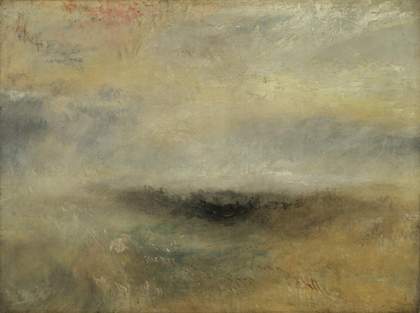
Joseph Mallord William Turner
Seascape with Storm Coming On (c.1840)
Tate
There’s something so incredibly perplexing about Turner’s unfinished paintings. I often speculate over his decision to leave them unfinished, or apparently so. Was it frustration? Fear? Boredom? Or did his days simply escape him? In Seascape with Storm Coming On c.1840, the inexplicable intangibility of this scene is what particularly captivates me. In the centre of the painting, an animated, unidentifiable black mass blurs the boundaries of the sea and sky.
Is it a shipwreck? A carcass of an unknown mammal? Perhaps a mystery from the deepest, darkest depths of the unmapped sea? The frenzied strokes of paint express an uncontainable energy that could have threatened the very ship that Turner sailed upon. A whirlpool summoning an unfathomable myth in the danger of the vast open sea.
I ponder whether a scene like this influenced the many sailors’ stories and maps that attempted to capture the uncapturable – like the Microcosmus marinus, also known as the Kraken among seamen from the 1300s to the present. The Kraken first appeared in written records in 13th-century Iceland, and is referred to in 1752 by the Danish Bishop of Bergen, Erik Pontoppidan, as a ‘dangerous swell of the sea’ in the form of a gigantic unclassified cephalopod capable of dragging the largest of vessels to their certain death. It was then subsequently spotted by Scottish seamen, Norwegian fisherman, and American whalemen in the North Atlantic, near Greenland, in the North Sea, off the coasts of Norway and by French sailors near Angola.
Whether or not we interpret this unfinished painting as a portrayal of the elusive Kraken, it is certain that it has captured the intangibility of a still mostly uncharted territory – the sea – and in doing so has conveyed an embodiment of a pure form of blackness: an uncontrollable speculation that is feared by land. A site that cannot be measured by the same parameters or laws of the land – of what is considered a living entity, human or not. In this sense, blackness is not the antithesis of land or of the human: it is the unknown and the fear of the uncontainable.
I wonder how often we encounter the equivalent of such an unidentifiable black mass in our lifetimes. Does it haunt us? Live on through stories of the indefinable? Or do we leave its portrayal unfinished?
Seascape with Storm Coming On was accepted by the nation as part of the Turner Bequest in 1856 and is included in the free collection display JMW Turner: Toil and Terror at Sea at Tate Britain. A landmark exhibition exploring the intertwined lives and legacies of JMW Turner and John Constable opens on 27 November.
Dominique White is a sculptor who lives and works between Essex and Marseille.

